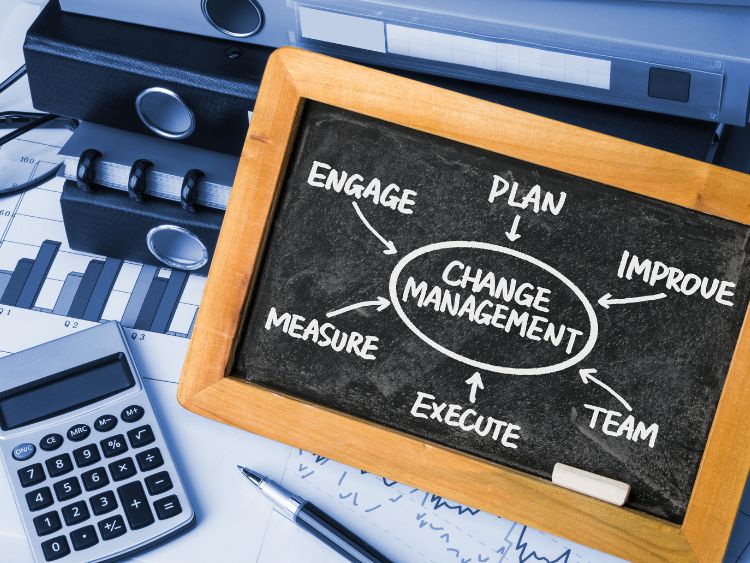Change is inevitable, but how we manage it can make all the difference. In the dynamic landscape of business, adopting a structured approach to change management is crucial. ADKAR change management stands out as a practical, goal-oriented model that guides individual and organizational change. Through this article, we’ll dive deep into the nuances of ADKAR, exploring its methodology, applications, and best practices to empower you to navigate change seamlessly.
Have you ever wondered why some organizations excel at implementing changes while others struggle? The secret often lies not in the change itself but in how it’s managed. Enter ADKAR change management, a model developed by Prosci founder Jeff Hiatt that provides a robust framework for addressing change at the individual level. ADKAR is an acronym for Awareness, Desire, Knowledge, Ability, and Reinforcement—five essential steps that ensure successful change.
Understanding ADKAR Change Management
ADKAR is more than just a buzzword; it’s a lifeline for businesses seeking to implement change effectively. Let’s break down each component of the ADKAR model:
- Awareness of the need for change:
- Individuals must understand why change is necessary. This awareness is the foundation of successful change management.
- Desire to participate and support the change:
- Cultivating a positive attitude toward change is critical. Without desire, resistance is inevitable.
- Knowledge on how to change:
- What does one need to know to change? Providing clear, actionable steps is key.
- Ability to implement required skills and behaviors:
- Can the individuals actually make the change? Training and other resources are vital.
- Reinforcement to sustain the change:
- How do you ensure the change sticks? Reinforcement mechanisms are crucial to avoid reverting to old ways.
Practical Applications of ADKAR
ADKAR’s flexibility allows it to be applied across various scenarios, from implementing new software systems to organizational restructuring. Here’s how different sectors can leverage ADKAR:
- Corporate: Streamline new policy implementation.
- Healthcare: Introduce new patient care protocols effectively.
- Education: Roll out new curriculum updates smoothly.
Why ADKAR Works
ADKAR’s strength lies in its focus on individuals. By addressing personal transitions in a structured way, it promotes a more inclusive and efficient approach to organizational change. Here’s what makes it work:
- Clear milestones: Each step of ADKAR provides specific goals, making the process measurable.
- Employee-centric: It considers the human aspect, reducing resistance and enhancing engagement.
- Versatile: It’s applicable to any size of change at any level of the organization.
Implementing ADKAR in Your Organization
Ready to put ADKAR to work? Follow these steps to integrate ADKAR change management effectively:
- Assess the Change Impact: Understand the scope and impact of the change on various stakeholders.
- Communicate Effectively: Keep lines of communication open and transparent.
- Provide Adequate Training: Equip your team with the necessary tools and knowledge.
- Support the Transition: Offer continuous support and address concerns promptly.
- Evaluate and Reinforce: Regularly assess the progress and reinforce the benefits of the change.
Overcoming Challenges with ADKAR
While ADKAR provides a clear path, challenges can arise. Common hurdles include insufficient awareness of the need for change, lack of desire among team members, or inadequate reinforcement strategies. Tackling these challenges head-on with proactive strategies like stakeholder analysis and incentive programs can enhance the effectiveness of the ADKAR model.
FAQs About ADKAR Change Management
Q: How long does it take to implement the ADKAR model? A: The time varies depending on the complexity of the change and the size of the organization, but it generally spans from a few weeks to several months.
Q: Can ADKAR be integrated with other change management models? A: Absolutely! ADKAR is often used alongside other frameworks to provide a comprehensive approach to change management.
Q: What is the first step in applying the ADKAR model? A: The first step is to create awareness about the need for change across the organization.
Summary
ADKAR change management offers a structured and effective approach to navigating organizational change. By focusing on individual transitions, it not only promotes successful implementation but also ensures that changes are sustainable. Whether you’re introducing a small procedural change or transforming your entire business model, ADKAR provides the tools needed to manage the process smoothly and effectively.

